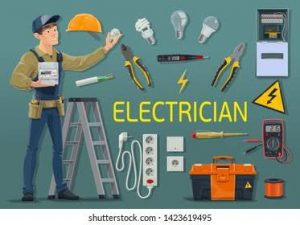

 In the past, people harbored fears of electricity, associating it with thunderstorms and ethereal phenomena. However, as time progressed, humans harnessed the power of electricity for their own purposes, making it an integral part of everyday life. Initially, electricity was generated through hydroelectric power, but with advancements in Electrical Engineering, we can now produce it through various means such as coal, fuel (crude), wind, nuclear power, and solar power.
In the past, people harbored fears of electricity, associating it with thunderstorms and ethereal phenomena. However, as time progressed, humans harnessed the power of electricity for their own purposes, making it an integral part of everyday life. Initially, electricity was generated through hydroelectric power, but with advancements in Electrical Engineering, we can now produce it through various means such as coal, fuel (crude), wind, nuclear power, and solar power.
Now, let’s delve into how electricity travels from the power plant to our homes.
Electricity is generated in power plants, often located near rivers to take advantage of water-generated power. However, there are numerous other methods of electricity generation as well. The focus of our discussion, however, is on how electricity reaches our households.
Electricity production in power plants is measured in megawatts, and the electricity generated is typically in the form of direct current (DC). However, most of our electrical appliances operate on alternating current (AC), necessitating certain intermediaries for distribution. Since electricity is intangible, it is transformed and transmitted via appropriate wiring. From the power generation plant, it travels to sub-stations and then to transformers. At the transformers, it is converted from DC to AC and distributed for household consumption.
Now, let’s discuss the installation of electricity in households.
To establish electricity supply in residential complexes or housing societies, an electrical transformer is required in the area. From there, the electrical connection is provided to the electrical meter box or main distribution box. The amount of electricity consumed is measured by the utility provider, who determines the charges and cost of consumption. Proper planning is crucial for electrical installations, and only certified electrical technicians with expertise in the field should undertake such work.
When installing electrical appliances, it is important to adhere to the standard guidelines set by government authorities. Approval from the relevant authorities ensures the safety and quality of the electrical components. Additionally, all wires and cables used to connect electrical points must be verified and approved by the appropriate quality control departments.
Now, let’s discuss the installation process itself.
Before beginning the electrical installation, it is essential to assess the condition and strength of the walls and construction of your house. If the walls are damp or retain water, it could endanger the entire installation. In such cases, applying damp-proof chemicals is necessary before proceeding with the electrical work.
While many apartment and flat owners prioritize aesthetically pleasing interior cabling, it is crucial to consult with a technician to determine whether such installations are permissible.
In summary, proper supervision by a certified and experienced electric technician is vital for electrical installation work at your home. They will provide guidance on ethical practices and ensure a safe installation. For more information, you can visit https://services.honjekexpress.com.

I like this site very much, Its a real nice situation to read and
incur info.!